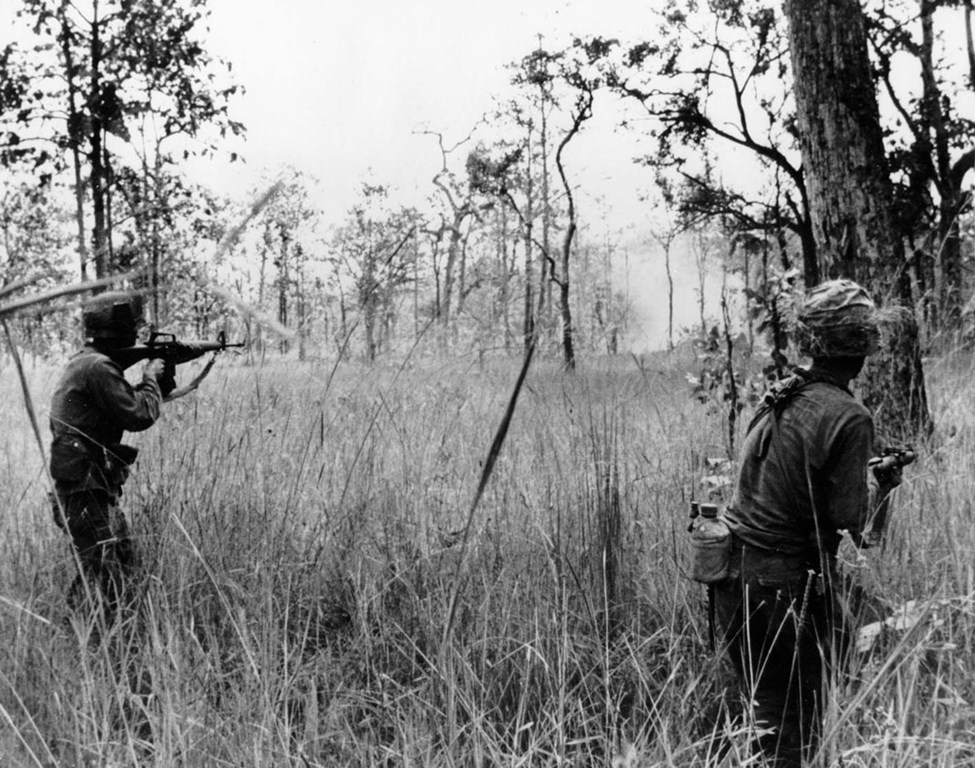Battle of the Ia Drang Valley Begins at Landing Zone X-Ray
November 14, 1965

Soldiers of the 1st Battalion, 7th Cavalry Regiment, 1st Cavalry Division (Airmobile), commanded by Colonel Harold “Hal” Moore, make the first major airmobile assault in the history of warfare, flying into the Ia Drang Valley. Their mission is to locate and destroy any Communist troops they find. The cavalrymen touch down at Landing Zone X-Ray, at the foot of the Chu Pong massif, in late morning.
Unknown to the Americans X-Ray is located directly next to a base area for several North Vietnamese Army regiments, which open fire on the cavalrymen soon after they begin to land. Over most of three days, Soldiers of the 1st Battalion, 7th Cavalry engage a significantly larger force of North Vietnamese, which effectively surrounds those in the landing zone and, on multiple occasions, nearly overruns their position. The 7th Cavalry’s perimeter is precarious, but they are kept supplied by a group of helicopter pilots who repeatedly brave a barrage of enemy fire to fly their UH-1 Iroquois “Hueys” into the landing zone, bringing ammunition, equipment, and provisions as well as evacuating casualties. Well-placed and timely American artillery and air support also help prevent X-Ray from being overrun. Casualties on both sides are high, though much higher for the North Vietnamese troops, who ultimately withdraw from the area on November 16.
The battle that unfolds at LZ X-Ray is the first major clash between American and North Vietnamese troops. Moore and others later refer to it as “the battle that changed the war in Vietnam,” because both armies learn much about their enemy’s tactics and capabilities, lessons which help determine the way future Vietnam War battles unfold.1